
During a deeply entertaining introductory press conference as Nottingham Forest manager in October, littered with witty one-liners and Brian Clough impressions, Sean Dyche found himself burrowing down a very revealing rabbit hole. “Skinny jeans, flared jeans, skinny jeans, flared jeans, my daughter hammers me for whatever jeans I wear,” he laughed, pausing for a moment before interrupting a journalist asking about something as prosaic as his plan to battle relegation.
“I think I got a bit of stick about my trainers, I believe, walking in the training ground, off social media,” he said. “Couldn’t believe that. One of my mates let me know that—as they do. Tom Ford [the trainers, not his mate], but anyway, don’t like to mention it.”
It was a light-hearted aside, delivered with two performative sniffs and a smirk beneath his ginger goatee, but it’s telling that a manager of a Premier League side circling the drain of the division is subjected to such detailed sartorial scrutiny—particularly from those outside his family home. Even more enlightening is the fact that Dyche, a character not normally associated with his fashion choices, wears designer trainers.

This is the price managers pay for their spotlight role in the biggest show in football. At a time when the Premier League’s popularity dwarfs every other division on the planet, let alone rival sports, there is no hiding. Every touchline is a catwalk. Some embrace the attention more than others, but it is there all the same.
Most social media critiques come from a place of total anonymity and zero authority. Everyone is entitled to their own opinion but some carry more weight than others. As the former fashion director of British Vogue, Venetia Scott’s say has some sway when it comes to style.
“Visionary, influential and inspiring” were the three words Edward Enninful, Vogue’s former editor-in-chief, used to describe Scott’s work as a stylist and photographer. Boasting a résumé littered with W, i-D, Dazed & Confused among many others, the former creative director at Marc Jacobs is entirely detached from the world of football. Blessed with a complete lack of bias, Scott gamely embarked upon a critical analysis of the clobber on offer among the Premier League’s managerial cast.
Dyche has had his share of passing trends. “I’ve seen enough ‘fashionistas’ coming in and out of this division,” he said. But the appetite for Premier League apparel is as fierce as it has ever been among pretty much everyone else.
Street

“Oh, goodness,” is Scott’s instant reaction to the sight of Manchester United’s Ruben Amorim.
The 40-year-old Portuguese boss is more versatile with his outfits than his tactics. For a manager who insisted that even the pope couldn’t convince him to ditch his precious 3-4-2-1 formation, it doesn’t take a papal decree to get him to switch it up on the touchline. Amorim is no stranger to a smart Paul Smith puffer jacket and occasionally finds himself draped in the club shop’s best offerings, but he more routinely takes a stab at something (theoretically) trendier.
“That is an unusual look,” Scott says, uneasily drinking in the jarring combination of a purple-lined flight jacket, white T-shirt, tan chinos and bright white trainers. “It’s like that game where you draw the head [fold the page] and then you draw the body [fold the page] and then you draw the legs.”
“The chinos are just from another look,” Scott says from her brightly lit, open-plan office, dangling the cursor over the offending garment on my laptop screen. “If he didn’t have the jacket on, he just had the white T-shirt and the chino, that would be one thing. But then, throw the jacket on and it becomes an odd combination.”
It takes several items to put a successful outfit together, but only one to ruin it.
Pep Guardiola, Amorim’s rival on the other side of town with Manchester City, is also let down by a single decision. The Catalan coach prowls most touchlines these days almost entirely decked out in C.P. Company. The word “almost” in that sentence is crucial.
There’s nothing wrong with Guardiola’s choice of matching jacket and trousers, even if the number of pockets is slightly ridiculous. C.P. is one of the foremost brands for casual sportswear out there—and, conveniently enough for the City manager, the club’s official fashionwear partner. As Scott says, “That looks pretty classic football wear,” before adding, “and then you come to the shoes ...”

“That is an unexpected twist,” Scott says of the bulky, brown derby pair Guardiola invariably wears while tip-toeing around his technical area. “He’s got a sporty look, and then he’s suddenly got quite a formal, hefty pair of shoes; smart, shiny, polished and surprisingly brown.”
Guardiola was once considered to be at the vanguard of managerial fashion. During his time at Barcelona and Bayern Munich, the trim former midfielder matched the slick style of his all-conquering teams with an array of tailored suits. He put this status down to the influence of his wife, Cristina Serra, who grew up working in her family’s boutique—which is where she met Guardiola, who came in as an unwitting customer—and now runs her own fashion brand.
“My wife is the best in the world at many things, but especially in fashion. So she says normally to me, don’t wear this or wear that, so I follow her,” City’s manager said on the inaccurately titled Men in Blazers podcast in 2024. “I am smart enough to know that when people are much, much better than me, follow their advice, and hers is really good.” With Serra back in Barcelona working on her own budding empire, any memo about Guardiola’s footwear may have got lost across the English Channel.
Brentford’s Keith Andrews isn’t married to someone in the fashion industry, he has dabbled, himself. The former Republic of Ireland international was a partner in the launch of Chess London. The now defunct “luxury menswear label for athletic men” provided the suits for Andrews’s Irish squad at Euro 2012 after he fell in love with the Italy national team’s prematch gear. “Could we emulate that look?” he said to himself. “Minus the tan.”
While his punditry attire was carefully tailored suits from his own company, Andrews has opted for more of a streetwear look during his first foray into Premier League management (perhaps because Chess London closed down in 2019).
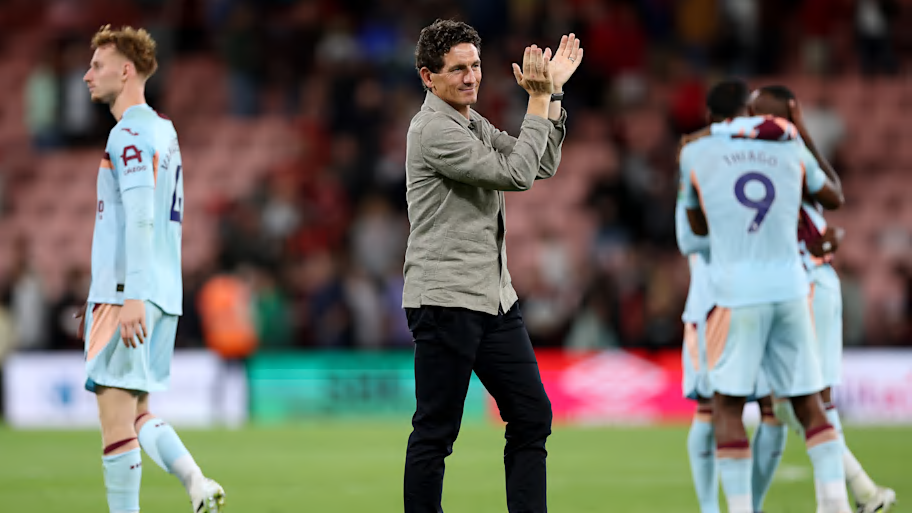
“He’s obviously put some thought into that. He’s coordinated,” Scott says of a favourite outfit for Andrews this season, matching a grey workwear jacket with the same shade of chunky trainers. Unfortunately, good intentions don’t always lead to a good outcome. “I don’t think that’s working for me,” Scott concludes.
Leisure
The act of wearing a tracksuit can feel like a cop-out these days, the managerial equivalent of wearing your school uniform on mufti day. Some, however, can still make it work.
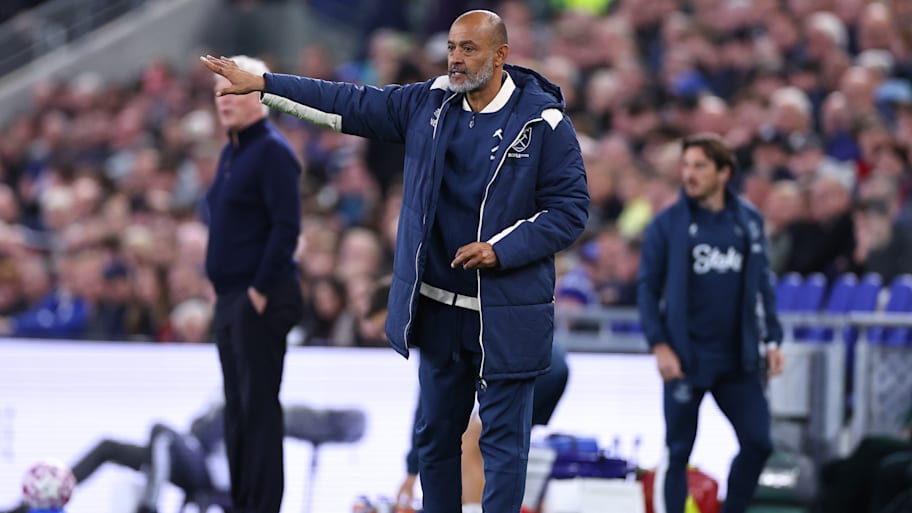
Nuno Espírito Santo preaches efficiency on and off the pitch. There is no dilly-dallying in anything vaguely approaching intricate passing football among his most successful teams and the Portuguese coach takes a similarly route-one approach to his touchline wardrobe. While West Ham United fans will continue to hold judgement over Nuno’s tactical approach, his style certainly seems to be working. “I think it looks good,” Scott says, admiring the navy club-branded tracksuit with a sleek white trim. “It all ties in.”
Unlike many of the club shop casuals which litter the Premier League, Nuno has chosen a tracksuit bottom fit befitting a man of his stature and vintage.
The same cannot be said for Eddie Howe.
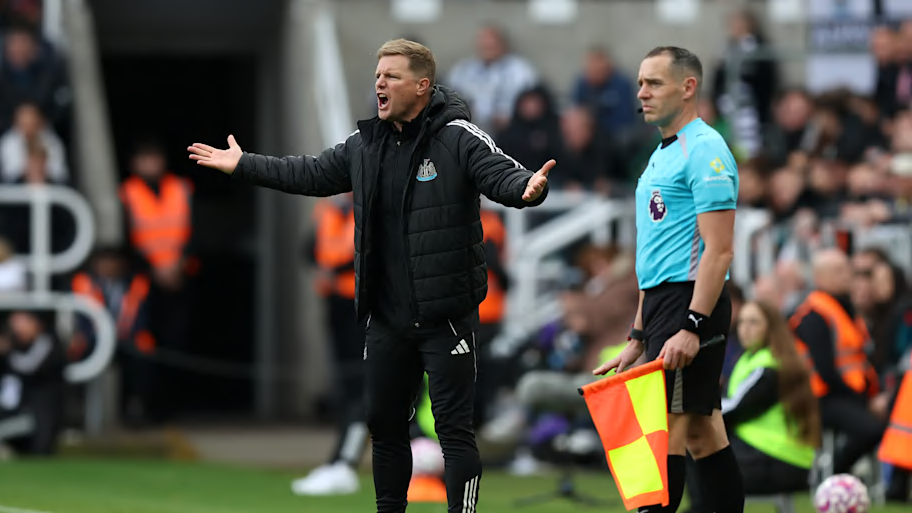
“Too tight,” is Scott’s appraisal of the Newcastle United manager’s trousers, if they can even be called trousers. “They’re heading towards leggings.”
Howe’s skin-tight attire shows off a defined set of calf muscles, honed during his 6 a.m. gym sessions which are overseen by Newcastle’s bleary-eyed head of performance Daniel Hodges, who dutifully treks to the training ground several hours before any other employee to put on a session for his boss. Poor Dan.
Sunderland’s Régis Le Bris falls into the same trap of slim tracksuits, while Chelsea boss Enzo Maresca has even been spotted in an unflattering pair of skinny jeans. However, the Italian manager more routinely opts for a baggier set of leisurewear which gets a conditional seal of approval.
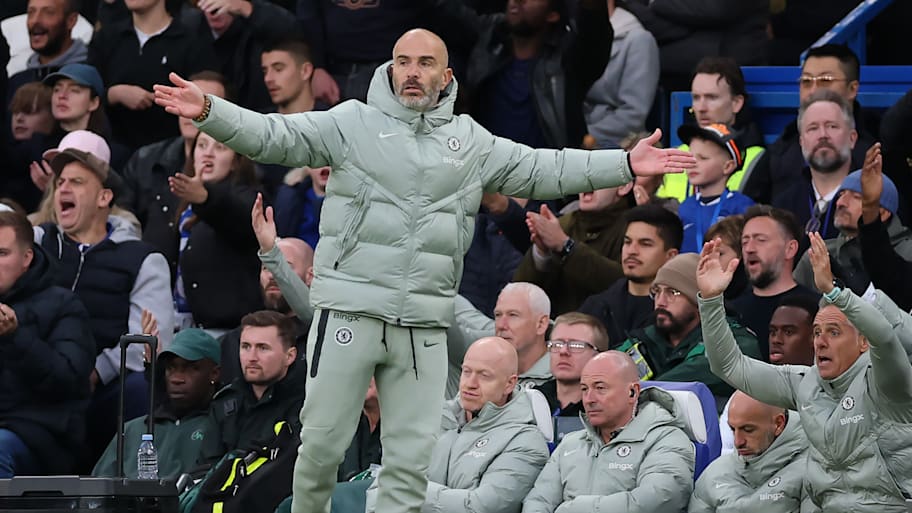
Scott is admittedly “not sure about the colour” of Maresca’s matching puffer and trousers, reserving judgement on the “sage-y” number. But taken in isolation, it’s a casual combination that doesn’t cause any great offence. The only issue is the mass of identical jackets clustered on Chelsea’s bench. “It’s sort of unsettling,” Scott says. That much sage in one place should be burned to cleanse a new home.
Dyche’s desperation to end Everton’s losing streak during the 2023–24 campaign didn’t quite extend to witchy remedies, but it wasn’t far off. The increasingly scrutinised manager had reshuffled his starting XI, deployed new tactics and prayed to the footballing gods for a change of fortune as the Toffees teetered above the relegation zone. Then he turned to one last-ditch measure: He got rid of his suit.
Throughout the vast majority of his managerial career, Dyche had been synonymous with a starchy white shirt, club tie and inoffensive blazer. “I always thought it was correct to wear a shirt and tie, but I just thought I’d play my part in what I was looking for from my players and staff,” he said at the time. It worked—even if his mother disapproved.
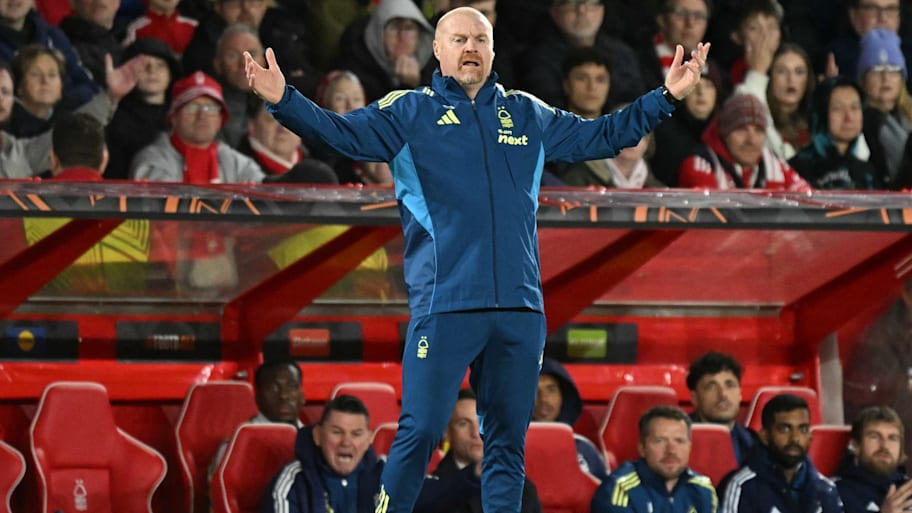
After steering Everton clear of relegation, Dyche has retained his lucky tracksuit at Nottingham Forest. The Tom Ford trainers of which he is so proud aren’t risked on the touchline, making way for a navy Adidas pair which fit with the blue two-piece supplied by Forest’s club shop. “Not much wrong with that,” Scott says.
Crystal Palace’s Oliver Glasner only relies upon Eagle-branded outfitting for the top half of his outfit, but his wintry look is rarely without that reliable puffer jacket. Scott is impressed with most of the Austrian coach’s wash of blue: “It looks pretty good. If I was to be picky, I’d switch the zig-zag stitching on the puffer to horizontal.”
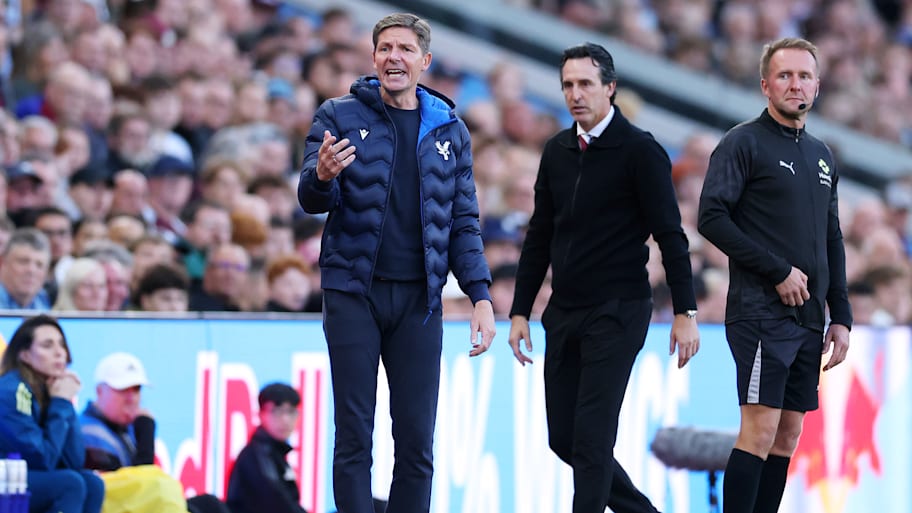
Scott need just wait until Palace pick up another piece of silverware. “After winning a trophy, I then change my outfit,” Glasner said last season. By that point, Palace had not won a single major title across their entire 164-year existence. The Eagles promptly lifted the FA Cup in May with Glasner watching on in delight and a black jumper. By the time Palace returned from preseason to win the Community Shield, his polo shirt had only been afforded a handful of outings before it too was tossed on top of the pile of winners’ medals.
Formal

“I was brought up in a slightly older style,” Burnley’s reliably suited-and-booted Scott Parker told FHM Collections during his playing days. “My dad told me to tuck my shirt in, look good and respect the game, so that has become embedded in me. I am really into looking as smart as I can and have been since I was a kid. I remember the first time I got paid, I went out and spent my wages on clothes. Style has always been a massive focal point for me.”
For many, that focus has paid off. Parker has been routinely hailed as the epitome of cutting-edge fashion anywhere in the Premier League. During a relegation-doomed spell at Fulham in 2021, when Parker was more adventurous, experimenting with Thom Browne cardigans whose four stripes around the arm baffled many casual observers, GQ did a detailed breakdown of his wardrobe. It was glowing: “Scott Parker is a lesson in how to dress properly in a dugout—or anywhere, really.”
Scott is less effusive in her appraisal of the Burnley manager. “He looks like an ad for Dunhill clothing,” she says with a tone that isn’t entirely complimentary. “The trousers are very tight,” she adds, nonplussed by a dapper look which has previously drawn such high praise.
Intriguingly enough, Aston Villa’s Unai Emery receives higher marks.
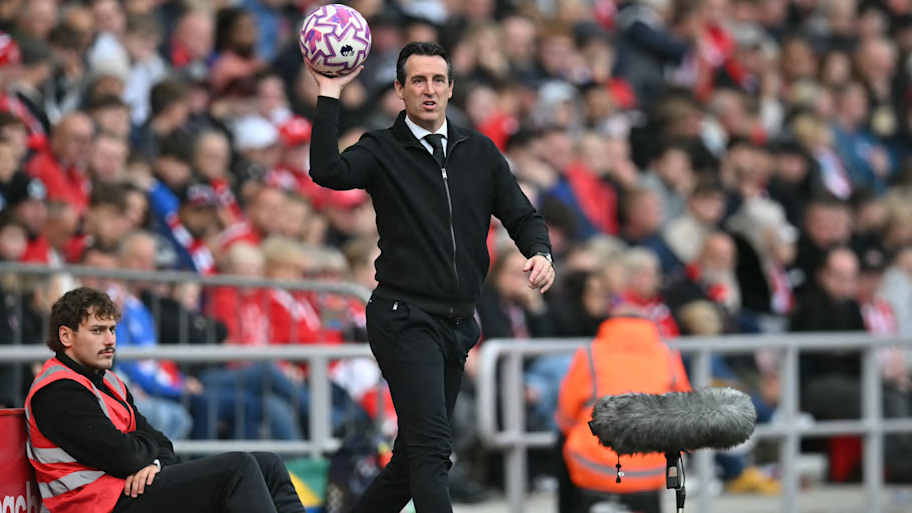
The Basque coach is what Scott calls “the prime example of smart casual.”
“He’s got a tie, a formal shirt and then the rest gets sporty.”
Emery doesn’t take on quite the same extremes as Bryan Robson—who infamously posed for his announcement as Nottingham Forest’s player-manager at Middlesbrough in 1994 wearing a shirt, tie and blazer together with a pair of shorts and football socks pulled up to his knees. But he hits the brief all the same.
Casual
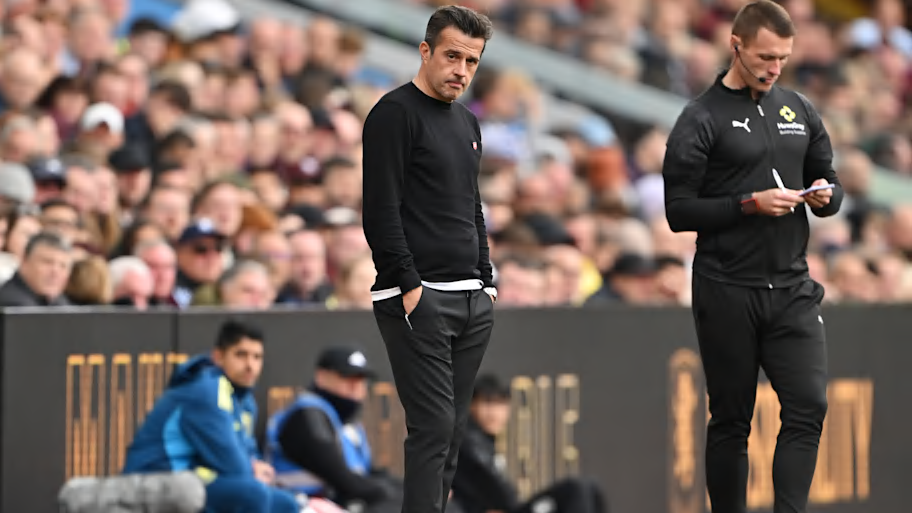
“Is that somebody we’ve seen before?” Scott asks when the image of Marco Silva pops up. This is not meant as an insult—the Fulham manager is in fact praised for his choice of jumper with a white tee poking out underneath, which is accented by his white trainers—but highlights the “uniform” which has spread across the Premier League.
Find a cashmere top, pair it with some trousers that don’t stop the blood travelling to your feet and you’ve managed to piece together a competent outfit. Everton’s David Moyes routinely opts for an understated look befitting the oldest manager in the division by at least half a decade while Leeds United boss Daniel Farke rarely strays from anything other than all black. “It suits him,” Scott says of the hulking German coach, which is more than can be said for his deceptively high-pitched voice.
Andoni Iraola stands out from the crowd of crewnecks for two reasons. Firstly, the tape he wraps around his fingers, a superstition—or “stupidity,” to use his own terminology—which he has carried throughout more than 860 games as a player and manager. Secondly, the bagginess of his familiar grey trousers.
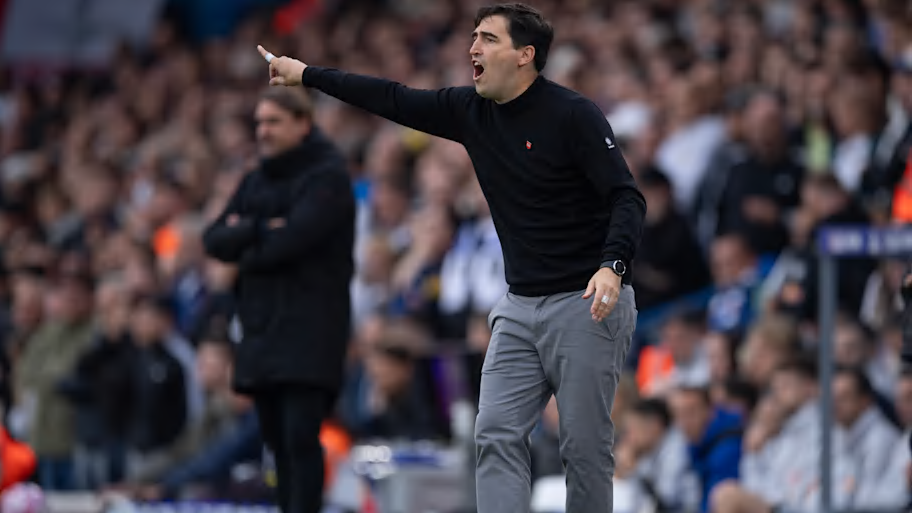
When describing what constitutes “obscenity” while ruling on the 1964 case of Jacobellis v. Ohio Supreme Court justice Potter Stewart shrugged: “I just know it when I see it.” The same principle can be applied to the suitable tightness of a Premier League manager’s trousers.
There is a fine line between drainpipe and flare, uncomfortably cloying and excessively expressive. Iraola leans towards the latter. While “not terrible,” Scott concedes that the Bournemouth manager simply “doesn’t look as sharp as the others.” Somehow, his loose grey slacks are so tight around the pocket that the bulge of his phone leaps off his thigh. “It’s not very good for the line,” Scott says, shaking her head.
Arne Slot almost gets an unconditioned nod of approval. The Liverpool manager carefully walks the trouser-tightness tightrope and routinely pairs his navy set with a matching coat which trickles slightly below his waist. But then you come to the jumper.
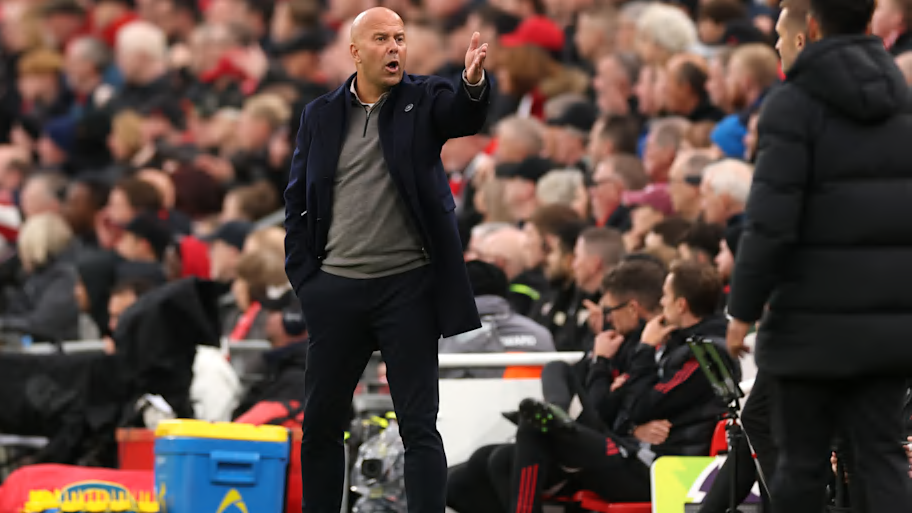
“It’s just a bit off here,” Scott says, searching for the best word to describe a dank grey fine knit. “Grandpa” is what she settles on. When framed by an otherwise enterprising wardrobe, Slot’s choice of top does give the impression of someone hurriedly picking anything out of the closet before heading into the ever-dwindling temperatures of England’s winter months. In fairness to the reigning Premier League champion, he may have been distracted by Liverpool’s worst run of form in 72 years while scrambling for an extra layer.
Mikel Arteta finds himself on top of the table and, in the eyes of Scott at least, on top of his fashion choices as well. “I think he looks pretty foxy,” Scott says of Arsenal’s league-leading manager, taking note of a “chic top” and pleated charcoal trousers which embody Arteta’s approach to dress sense.
“I don’t like noisy clothes,” he previously told The Telegraph. “I am picky about what clothes feel like. I like cashmere. Comfy and elegant.”
Arteta also revealed that he sticks to exactly the same outfit throughout Arsenal’s winning runs before changing at least one item in the event of a defeat—which helps explain why he has maintained such a similar wardrobe this season.
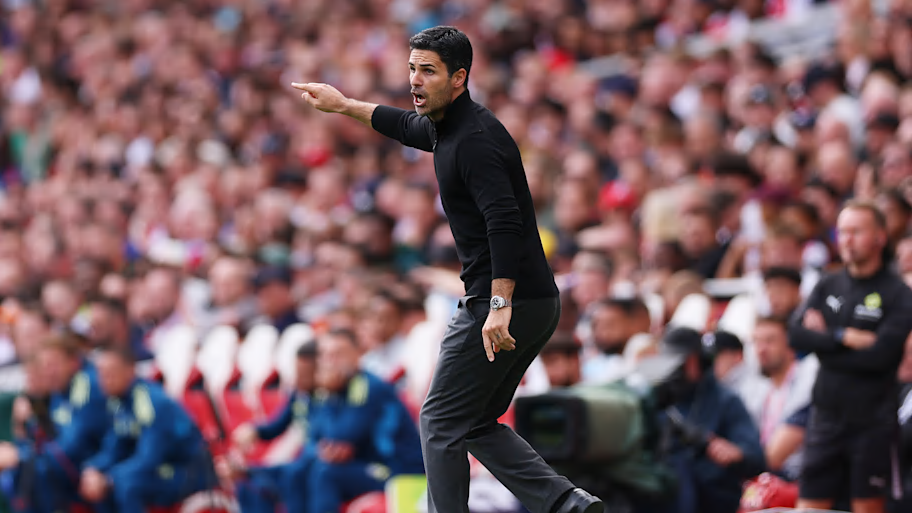
For all his supposed disdain for flashy apparel, Arteta is not shy about showing off his wristwear. “He’s got the watch on show,” Scott points out, flagging the slightly pulled-up sleeves which offer a full view of his Rolex Oyster Perpetual GMT-Master II. “He doesn’t want you to miss that.” And why would he?
Arteta got the watch after being voted Everton’s Player of the Year in 2007 for a second season on the spin. It is clearly a cherished memory from his days as a player which is reignited every time he looks to see how long it’s taken his team to set up for a corner.
Thomas Frank had no playing career to speak of. Oddly enough, they don’t hand out £10,000 Rolexes to midfielders who wrapped up their playing days at the age of 20 after struggling to make a mark in the Danish lower leagues. Frank was convinced to become a coach at Frederiksværk’s youth team, accepting the modest offer of 1,000 Danish kroner ($154) and a tracksuit. The passion for management stuck but the leisurewear has been upgraded.
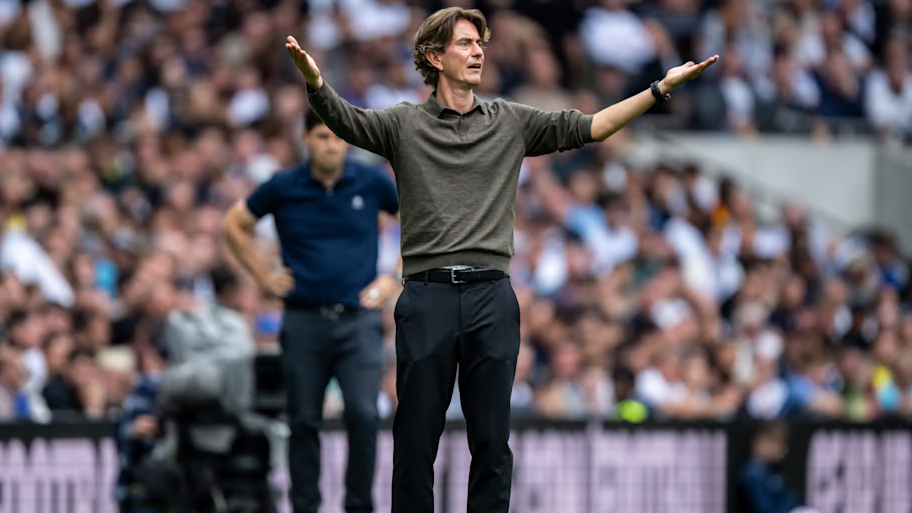
“Here we go,” Scott says of Tottenham Hotspur’s “stylish” manager. The “taupe-y grey” top complements Frank’s auburn hair and works well with an understated pair of pleated navy trousers. As Spurs discovered across the opening weeks of the season, Frank nails the basics. While this minimalistic setup has shown signs of unravelling on the pitch, there aren’t 19 rivals pouring over hours of footage in a feverish attempt to undermine the Dane’s sartorial approach.
“He’s number one,” Scott concludes. “Tip-top.”
READ THE LATEST PREMIER LEAGUE NEWS, TRANSFER RUMOURS AND GOSSIP
This article was originally published on www.si.com as The Premier League’s Best (and Worst) Dressed Managers.







